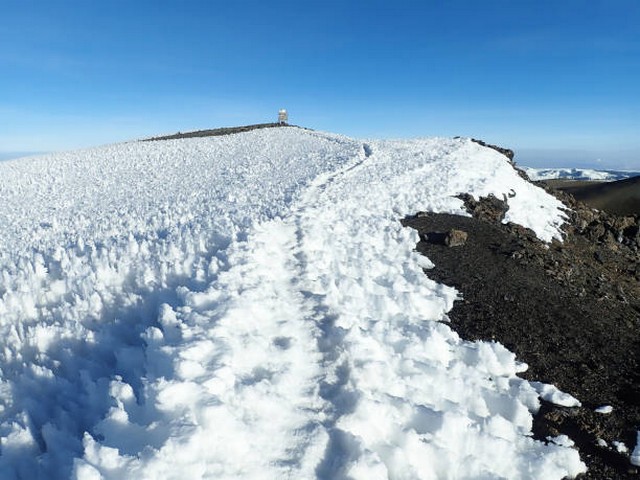How To Ensure A Safe Kilimanjaro Trekking Experience
Ascending the majestic heights of Mount Kilimanjaro is not just a trek; it’s a journey into the heart of Africa’s beauty and a test of personal endurance. The tallest freestanding mountain in the world calls to adventurers from every corner of the globe with its snow-capped peak and breathtaking vistas. Here at the Kilimanjaro Centre for Trekking and Ecotourism (KCTE), we understand the allure of Kilimanjaro and the importance of a safe, memorable ascent. In this comprehensive guide, we’ll take you through the essential steps to ensure your Kilimanjaro trekking experience is as safe as it is exhilarating.
Preparing for Your Climb: The Foundations of Safety
Get Physically Ready
Preparing your body for Kilimanjaro is the first step towards a successful summit. Engage in cardiovascular activities such as hiking, running, or cycling months before your trip. Strength training can also help, focusing on the legs and core to withstand the long trekking days. Remember, the better your fitness level, the more you’ll enjoy the journey.
Choose the Right Gear
The right equipment can make a significant difference. Invest in good quality hiking boots, a warm sleeping bag, and appropriate layering to handle the mountain’s varied climates. Don’t forget a comfortable, well-fitted backpack. At KCTE, we provide a detailed gear list to all our climbers to ensure no essential is overlooked.
Understand Altitude Sickness
Altitude sickness is a real concern on Kilimanjaro. Familiarize yourself with the symptoms and understand how to mitigate them. Hydration is key, along with a slow ascent to allow for acclimatization. Our guides are trained to monitor climbers for any signs of altitude sickness, ensuring timely intervention if needed.
Navigating Your Route: Choosing the Best Path
Selecting the Right Route
Kilimanjaro offers several routes, each with its unique features and challenges. From the scenic but longer Lemosho route to the more direct Marangu route, consider your experience level, fitness, and preferred scenery. KCTE offers guided treks on all major routes, providing insights and advice on the best path for your requirements.
Importance of a Skilled Guide
A skilled guide is invaluable on Kilimanjaro. Our KCTE guides are experienced, knowledgeable about the mountain’s ecology, and trained in emergency first aid. They not only lead the way but also enhance your understanding of the mountain’s rich history and biodiversity.
Climbing Smart: On-the-Mountain Safety Protocols
Listen to Your Body
The mountain teaches humility — it’s vital to listen to your body and communicate openly with your guide. If you feel unwell, speak up. The success of your climb is measured not only by reaching the peak but doing so safely.
Pace Your Climb
“Pole pole” (slowly, slowly in Swahili) is the mantra on Kilimanjaro. Maintaining a slow, steady pace will help your body adjust to the altitude and reduce fatigue.
Stay Nourished and Hydrated
Regular meals and ample water intake are crucial. Our KCTE team ensures you have balanced meals rich in carbohydrates and proteins, and we emphasize the importance of hydration throughout your trek.
Beyond the Climb: Environmental and Cultural Respect
Leave No Trace
Respecting the mountain means keeping it clean. Follow the ‘Leave No Trace’ principles by disposing of waste properly and minimizing environmental impact. KCTE champions eco-friendly practices to preserve the beauty and integrity of Kilimanjaro.
Embrace Local Culture
Engaging with local culture enriches your experience. Our guides, many of whom are local residents, share stories and customs that provide a deeper connection to the region you’re exploring.
Ensuring Your Safety with KCTE
Choosing KCTE for your Kilimanjaro trek not only ensures a safe climb but also an enriching experience. Our safety protocols, experienced guides, and commitment to quality service set us apart. We’re dedicated to making your Kilimanjaro journey unforgettable from start to finish.
FAQs: Safely Trekking Kilimanjaro
What is the best time of year to climb Kilimanjaro?
The best times are during the dry seasons: January to mid-March and June to October. These months offer the clearest skies and safest climbing conditions.
How long does it take to climb Kilimanjaro?
It varies by route, but typically it takes between 5 to 9 days. We recommend routes that allow ample time for acclimatization to increase your chance of a successful summit.
Do I need special insurance for climbing Kilimanjaro?
Yes, travel insurance that covers high altitude trekking is crucial. Ensure that it includes medical evacuation in case of emergencies.
Can beginners climb Kilimanjaro?
Absolutely! Kilimanjaro is a non-technical climb, making it accessible to beginners who are physically fit and well-prepared. Our guides at KCTE provide support every step of the way.
Final Thoughts and Action Steps
Climbing Kilimanjaro is a transformative experience that challenges the body and invigorates the soul. By preparing adequately, choosing the right route, and respecting both the mountain and its communities, you set the stage for a journey that you’ll recount for years to come. Ready to take the first step on your Kilimanjaro adventure? Book your trek with Kilimanjaro Centre for Trekking and Ecotourism (KCTE) today, where your safety and satisfaction are our priorities. Let us help you reach the roof of Africa safely and joyfully!
Embark on this incredible adventure with confidence and inspiration, knowing that with KCTE, you’re not just climbing a mountain, you’re embracing a once-in-a-lifetime expedition. Join us, and let the journey begin!




